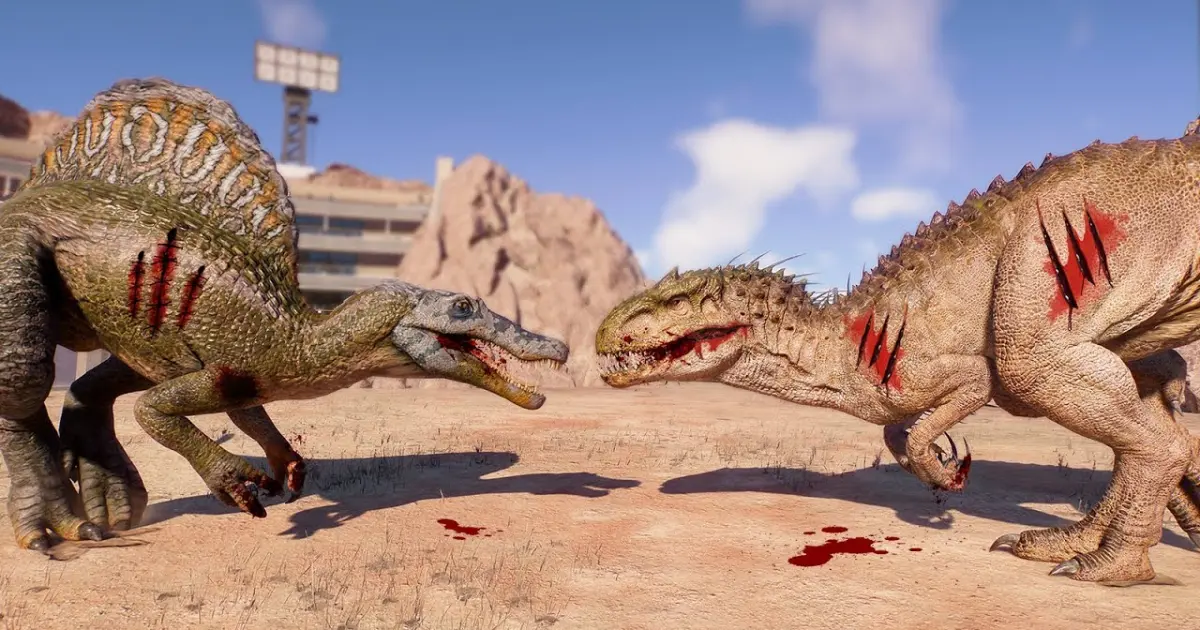When it comes to prehistoric predators, few names evoke as much awe as Spinosaurus aegyptiacus vs T rex. These iconic dinosaurs represent two of the most formidable carnivores to ever roam the Earth. But if they ever crossed paths, who would reign supreme? Let’s delve into the truth behind this speculative duel.
Table of Contents
ToggleMeet the Titans
Spinosaurus Aegyptiacus
- Size: The Spinosaurus was a giant, stretching up to 50-60 feet long, making it the largest known carnivorous dinosaur.
- Features: Distinguished by its iconic sail-like structure on its back and crocodilian snout, Spinosaurus was semi-aquatic, thriving in rivers and swamps.
- Strengths: Its long, conical teeth were perfect for catching fish, and its powerful forelimbs were armed with large claws, ideal for tearing prey apart.
Tyrannosaurus Rex
- Size: Slightly shorter at 40-45 feet long, the T. rex made up for its size with sheer power.
- Features: Known for its massive skull and bone-crushing bite force (up to 12,800 pounds), T. rex was a terrestrial predator.
- Strengths: Its robust legs allowed for bursts of speed, and its jaws were unmatched in delivering lethal bites to large prey.
The Hypothetical Battle
While these two titans lived millions of years apart—T. rex in North America during the Late Cretaceous and Spinosaurus in North Africa during the earlier Cretaceous—speculating about a face-off is irresistible.
- Environment Advantage:
- Spinosaurus dominated in aquatic settings, making it nearly invincible in water. On land, however, its long legs and fish-adapted snout might have put it at a disadvantage.
- T. rex, a land predator, would excel in open terrain with its powerful jaws and strategic hunting techniques.
- Weaponry Comparison:
- Spinosaurus relied on claws and its slender jaw for precision attacks. These weapons were formidable against aquatic prey but less effective against larger, tougher adversaries.
- T. rex’s bite force alone could crush bones, giving it a lethal edge in a close-combat scenario.
- Stamina and Agility:
- Spinosaurus’s semi-aquatic nature suggests less agility on land, limiting its ability to evade attacks.
- T. rex was built for endurance and brute strength, capable of outlasting most opponents in a prolonged fight.
Who Would Win?
In water, Spinosaurus would likely dominate, leveraging its aquatic adaptations to outmaneuver and potentially overwhelm T. rex. On land, however, T. rex’s bone-shattering bite and terrestrial prowess would give it the upper hand.
Ultimately, the outcome depends on the battlefield. While both dinosaurs were apex predators in their respective domains, their strengths were tailored to their unique environments.
The Legacy of Two Legends
Despite the speculation, Spinosaurus and T. rex continue to capture our imaginations as symbols of nature’s incredible power and adaptability. Their contrasting features and abilities remind us of the diverse ways life evolved to conquer different habitats during the age of dinosaurs.
The deadliest duel may never have happened, but the fascination it inspires proves these prehistoric giants still rule in our collective curiosity.
For more details, please visit our blogs.

